1. ANSWER: Adopt new strategies for magnifying our impact in the world.
1.1. Dan Pallotta
1.1.1. an Apollo program for American philanthropy and the nonprofit sector
1.1.2. Pallotta argues that structural dysfunction, cultural prejudices, and public illiteracy are holding the humanitarian sector back -- making it difficult to solve big social problems.
1.1.3. His prescription? A civil rights movement for charity.
1.1.3.1. One goal? Increase charitable giving from the current 2% to 3% of gross domestic product by 2022 -- with a disproportionate amount going to health and human service causes.
1.2. Forces for Good
1.2.1. What, per the authors, makes great nonprofits great?
1.2.1.1. The best organizations are NETWORKED NONPROFITS that drive COLLECTIVE IMPACT and thus are able to achieve greater results than any one player could achieve alone.
1.2.1.1.1. Collective Impact occurs when organizations from different sectors agree to solve a specific social problem using a common agenda, aligning their efforts, and using common measures of success.
1.2.2. Recommended approach (overarching)
1.2.2.1. Cultivate individual and organizational NETWORKS to better: understand systems and build community; develop and share knowledge; aggregate and coordinate resources and services; scale.
1.2.3. The six practices that high-impact nonprofits use to achieve extraordinary impact:
1.2.3.1. 1. Work with government and advocate for policy change
1.2.3.2. 2. Harness market forces and see business as a powerful partner
1.2.3.3. 3. Convert individual supporters into evangelists for the cause
1.2.3.4. 4. Build and nurture nonprofit networks, treating other groups as allies
1.2.3.5. 5. Adapt to the changing environment
1.2.3.6. 6. Share leadership, empowering others to be forces for good
1.3. Parents2Projects
1.3.1. My twist on one of the six (Forces for Good) practices above, "Convert individual supporters into evangelists for the cause."
1.3.1.1. Inspire evangelists?
1.3.1.1.1. Yes. You want volunteers and donors to be more than sources of free labor or membership dues. You want them to become evangelists for your cause, people who will help you build and sustain strong communities to help you achieve your larger goals.
1.3.2. P2P is a stronger form. It's "inspire evangelists" on steroids.
1.3.2.1. It's about empowering parents to TAKE CHARGE of their lives and do more of the necessary work of caring for our community.
1.3.2.2. It aims to inspire not just evangelists but CO-CREATORS.
1.3.2.3. It's centered around WORK and getting more of it done.
1.3.2.3.1. Made possible in no small part by today's digital technologies
2. P2P: Connects those who need additional help [A] with those who can provide it [B]
2.1. [A] Folks doing the work of caring for our CP--neurological disorders--brain research--special needs community at large:
2.1.1. Who are they?
2.1.1.1. Organizations and individuals working in these five sectors:
2.1.1.1.1. Nonprofit / Humanitarian
2.1.1.1.2. Government
2.1.1.1.3. Private / Business
2.1.1.1.4. Multi-stakeholder Networks
2.1.1.1.5. Non-organizational Forms
2.1.2. What kinds of help do they need?
2.1.2.1. They could use help with any and all o' the stuff they've committed to doing in their efforts to achieve their goals and carry out their missions. From the biggest projects to the smallest tasks. From the profound to the mundane. From the realistic to the fantastic.
2.2. [B] Potential low- or no-cost workers / service providers
2.2.1. What kinds of help could these people -- working alone, in traditional teams, or in collaborative communities -- provide?
2.2.1.1. Our emphasis is on work that can be done from a distance, i.e., that doesn't require a physical presence.
2.2.1.1.1. Six classes:
2.2.2. Who are they?
2.2.2.1. Four categories of providers:
2.2.2.1.1. Parents
2.2.2.1.2. Pro bono consultants
2.2.2.1.3. Freelancers
2.2.2.1.4. Students; academics
3. QUESTION: How can we get bigger up against our challenges?
3.1. Our problems are massive.
3.1.1. There are "more than 14 million children living in the US with one of more than 600 different neurological conditions.
3.2. Our humanitarian-sector organizations, i.e., our nonprofits, are tiny up against them.
3.2.1. The vast majority of nonprofits are extremely small, with annual budgets of less than $1 million.
